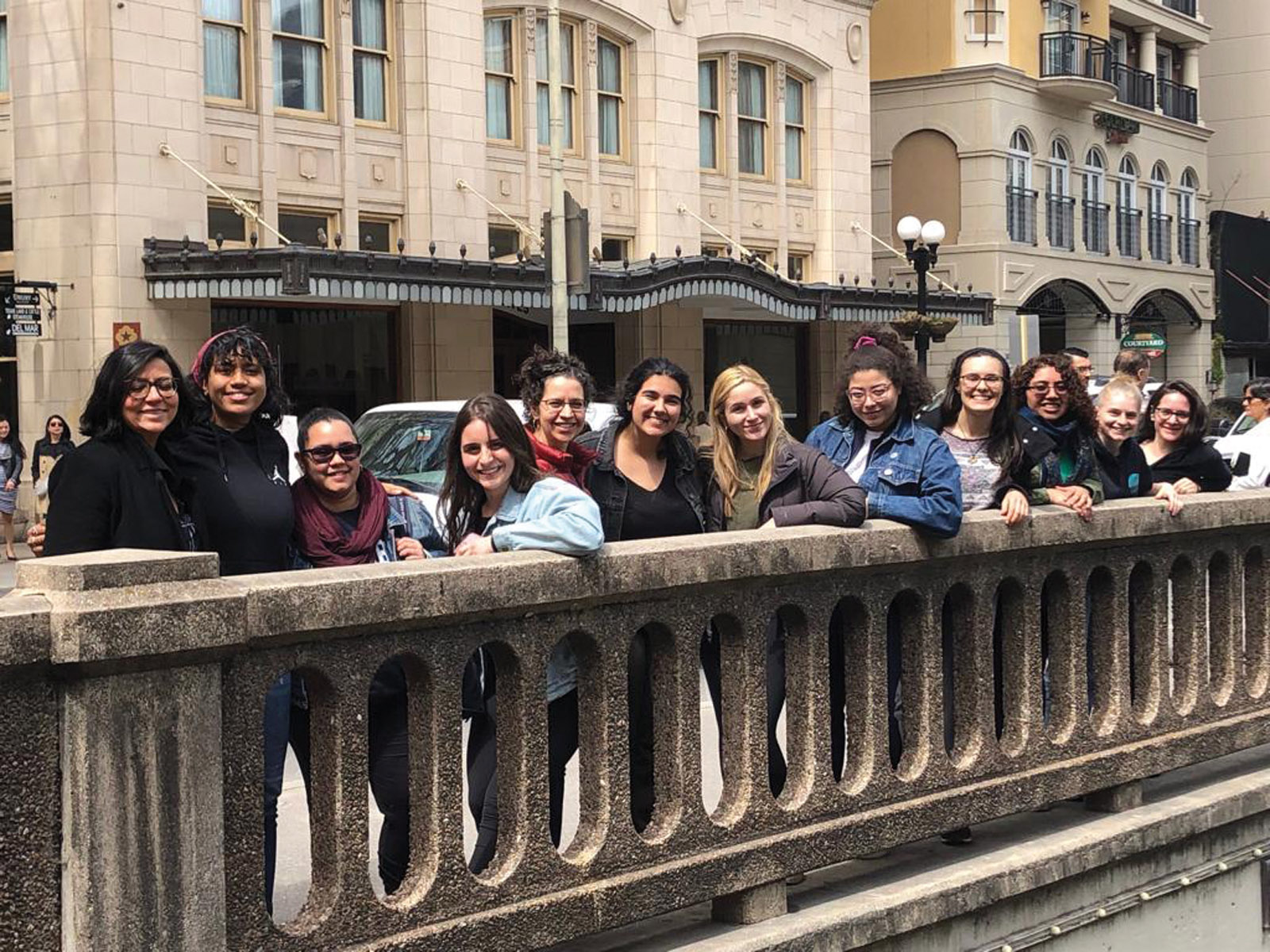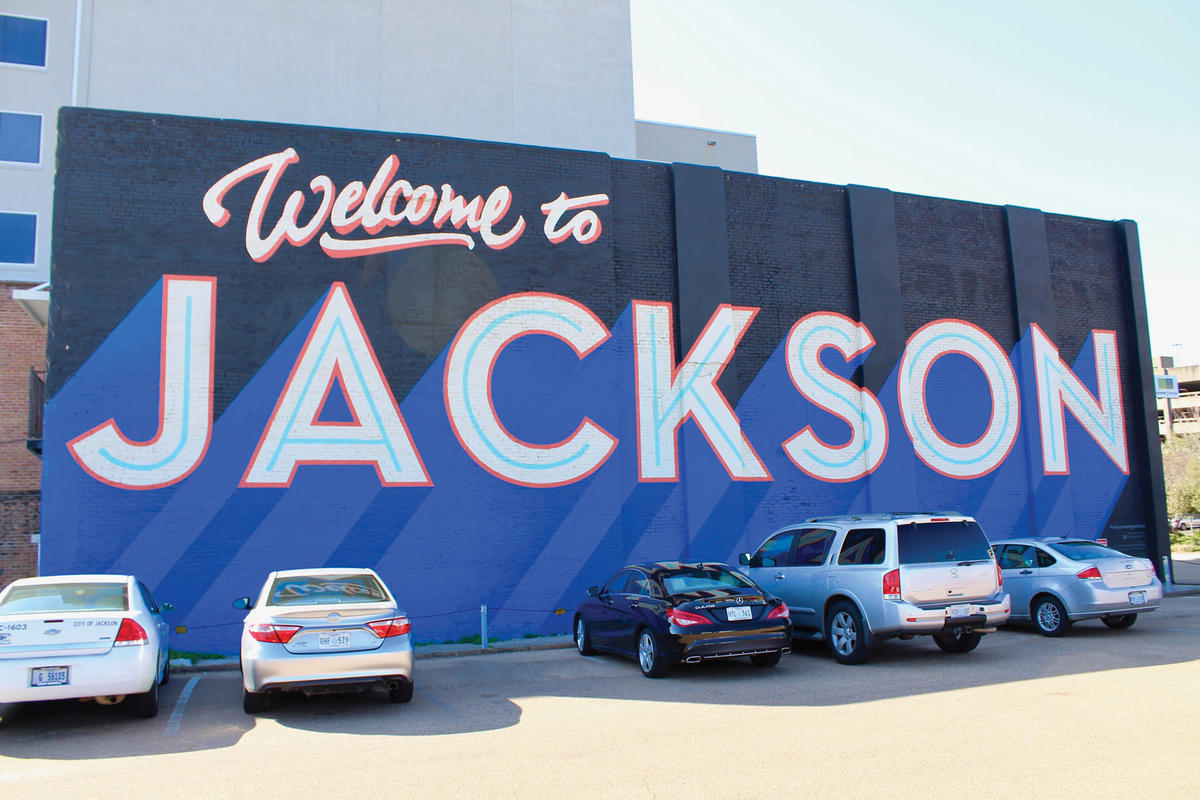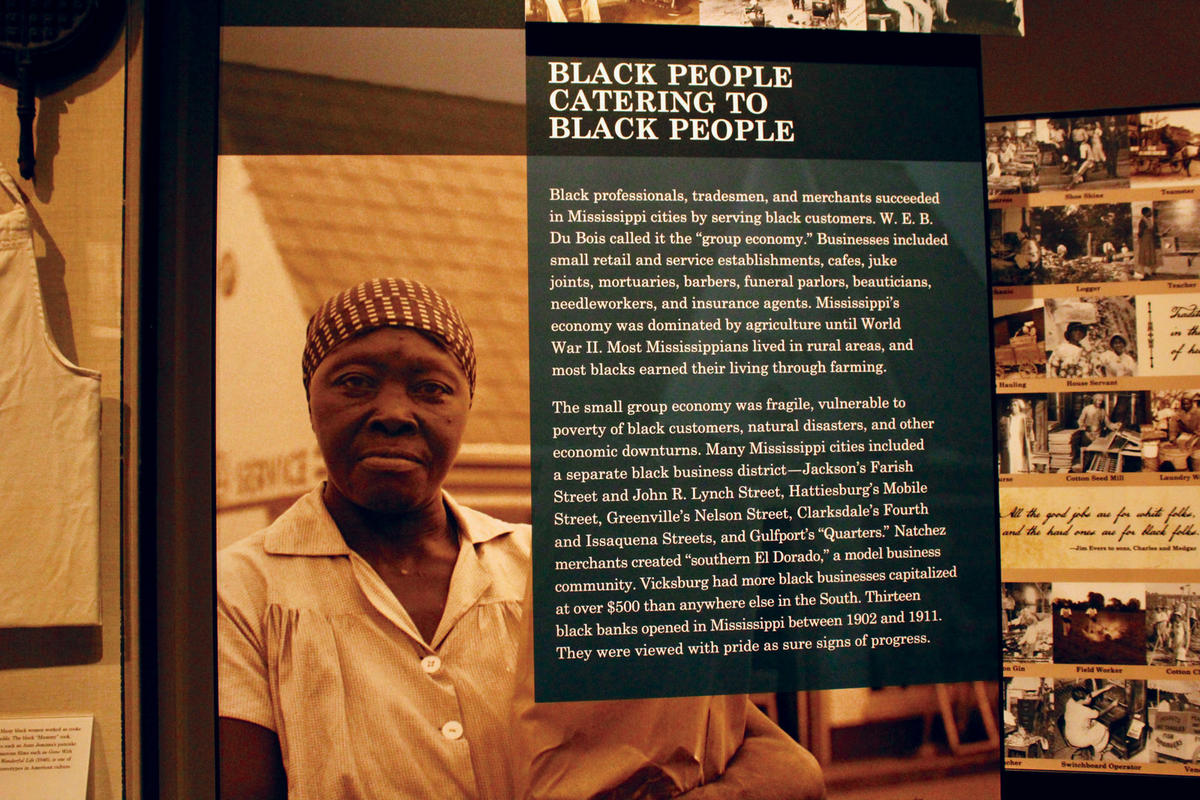
Last year, Madison Ailts ’19 had an experience through the Barnard History Department that changed her life.
One of eight students who took part in Mississippi Semester, a spring course taught by Professor Premilla Nadasen, Ailts learned about the history of welfare, poverty, and the black freedom movement, and then helped create an index measuring women’s economic security in Mississippi for a community organization there. Over spring break, she and her classmates then traveled to Biloxi to work with the group.
“When I saw the course listing — it was something completely new — I knew I had to take it,” Ailts says.
Mississippi Semester is one of the History Department’s more unusual offerings. But it is emblematic of the direction the department is taking — employing creative, hands-on experiences and using new tools and technologies to help students understand not just the past but the present, too. These new pedagogies and technologies are an attempt to attract more students to the discipline, which has been losing students in droves at colleges across the nation over the past decade. They are also a reaction to the current political climate, which has left many students searching for explanations.
“The most pressing problems that we face today, such as discourses about immigration, are not ones that either economics or political science are really equipped to explain,” says Professor Nara Milanich. “Where are these xenophobic discourses coming from? How have people received migrants in the past? Is what we’re doing unprecedented, or have we always behaved this way?” History can help answer these questions. And that, she and her students agree, “makes history look more relevant to students than it might have been” just a few years ago.
Whither the past?
Between the Great Recession (2008-2009) and 2017, the number of Barnard history majors dropped from 49 to 28, following a national trend. In a recent, well-publicized analysis of the field nationwide, Northeastern University history professor Benjamin Schmidt observed, “Of all the major disciplines, history has seen the deepest declines in the number of bachelor’s degrees awarded.”
But in the past two years, Barnard has become something of an anomaly. In 2018, the number of Barnard history majors almost doubled, to 55. The Class of 2019 included 60 majors, says Professor Dorothy Ko, who heads the department, which was recently named one of the country’s 10 best by College Magazine.
One reason for the change is that the department better understands the needs of its students. Many history majors no longer want to go to graduate school to study history, Ko says, “and that is fine with us.” A number of students in the department are double majors. “These students told us, ‘I want to be a mathematician’ or ‘a scientist’ or ‘a doctor,’ ” Ko explains. “They say, ‘I want to be fully developed in the humanities, and history is the best training.’ ”
The department saw this as an opportunity, Ko says. “We thought, ‘How can we get more of these types of students?’ ”
To do so, the department began broadening the types of projects — capstone and otherwise — that students can submit to meet course and major requirements. Capstone projects in particular integrate and synthesize much of what Barnard students learn in their major courses over four years of study. Traditionally, history students have had one capstone option: a written senior thesis based on primary sources.
But beginning this fall, as part of a pilot program, seniors can complete an oral history project instead; rather than relying solely on artifacts and written documents, they can interview sources — using audio recordings, video, or both — and use those interviews for their final project.
Nadasen, who will be teaching the oral history capstone seminar, will be working with the Columbia Center for Oral History to train students in conducting oral histories. This approach is not new. The Columbia Center got its start in 1948 and was the first of its kind at a major university. But recent advances in technology have made it easier to both conduct and disseminate these interviews. The methodology can help students and scholars alike “understand contemporary political issues from the perspective of ordinary people.... It is one important tool that enables us to develop a different lens around politics,” Nadasen explains.

The department is also talking about other capstone options, including digital history, which can involve geographic information systems (GIS) — computerized systems for analyzing and presenting spatial or geographic information — as well as videos, blogs, and other forms of exposition. The College’s Empirical Reasoning Center (which teaches students how to use a variety of software programs to help them utilize data) and Barnard’s Instructional Media and Technology Services have collaborated with history professors to teach relevant skills. “This is an experiment,” says Associate Professor Abosede George, “and it’s possible now because Barnard has so many units that we can pull from, and some students already trained in this.”
Experiential Learning
For Nadasen and other professors, the goal of courses such as Mississippi Semester is not only to offer students new learning opportunities but also to provide a service to the organizations they work with. Her class grew out of a long-standing relationship she has had with the Mississippi Low-Income Child Care Initiative (MLICCI).
Nadasen wanted Mississippi Semester to be a two-way street, in which students learn but also assist the organization. Nadasen’s students, using spreadsheet software to examine data on economic security and GIS software to visualize the results, created an index that became a learning tool for them and a lobbying tool that MLICCI has used to advance its public policy efforts. “It was a very eye-opening experience for the students and myself,” Nadasen says.
For Ailts, the experience was so profound that she changed her career plans. Though she still intends to go to law school, her original plan to specialize in corporate law has fallen by the wayside. Instead, after returning from Biloxi, she applied for an internship with the American Civil Liberties Union and now wants to practice civil rights law.
“The media focuses on the South being racist and on really negative views of poverty and welfare,” she says. During the visit she noted a more complex picture, one that included many community-organizing efforts. “I saw how effective community organizing can be intertwined with academic research — we helped them and they helped us.”
Nadasen stresses that on-site, experiential learning can be essential in creating a more complete understanding of her class’s subjects. For example, the indicators of economic security that the class initially included in its index — such as median earnings, education, health care, and unemployment — failed to take transportation into account.
“We didn’t factor it in as important,” she says. “But we went to the Mississippi Delta and spoke to people who had to travel three hours by bus each way in order to get to work, and that severely impacted their economic well-being.”
In addition, the index couldn’t just be quantified in a map or numbers. “We needed ethnographic information — we needed people’s stories,” Nadasen says. “That brought a human dimension to the ways poverty has been experienced in Mississippi.”
Nadasen hopes to continue to offer the class year after year, depending on MLICCI’s needs. The executive director told her that “after a year of real assaults on people of color and poor people in this country, it was really amazing to see the work that we do through the eyes of Barnard students.”
New Sources, New Voices
This spring, Milanich taught another new course, Seeking Asylum, which included an experiential component: a trip to an Immigration and Customs Enforcement (ICE) facility in Dilley, Texas. Students worked with the Dilley Pro Bono Project, a group that provides legal services to mothers and children being held at the country’s largest detention center for migrant families.
Milanich, too, has a relationship with the community she studies. “I had been to Dilley and was flabbergasted at the gross human rights violations,” she says. Ten days before the 2016 presidential election, she presented a panel at Barnard on the detention of migrant families; the panel included lawyers, advocates, and women who had been detained. The students who attended the panel were as amazed as she had been during her visit, and she realized, “I brought Dilley to Barnard, but I needed to bring Barnard to Dilley.”
She had long wanted to teach a course like Seeking Asylum. And “after the election, a lot of students were asking ‘How do I get involved? How do you explain this?’ ” she recounts. “We were dissatisfied with simply sending them the name of a local social justice organization — it seemed like a missed pedagogical opportunity.”
Once Seeking Asylum was in the course catalog, 50 students applied for admission, but Milanich capped the class at 10 juniors and seniors because of funding limitations. Had she offered it three years ago, she estimates, she would have had fewer than half the number of applicants.
The first part of the class looked at Central American history and how U.S. involvement in the region over time “helped produce the political and economic situation we find ourselves in today,” Milanich says. The second part studied the politics and history of asylum. The third focused on mass incarceration of immigrants and how it relates to mass incarceration in general.
While in Dilley, the class conducted audio interviews with former detainees. “We are interested in elevating their voices and helping people better understand,” Milanich says, “perhaps through a podcast or website.”
Milanich, who likes everything planned down to the last crossed “t” and dotted “i,” found this class, with its many moving parts, particularly exciting and challenging. “I learned to let go. It was really about the students helping to design the class as we moved along. I thought I would say, ‘This will be our project, and you carry it out.’ But we came up with the project together. It was a very different pedagogical experience.”
Milanich and Nadasen aren’t the only professors using these new approaches. This fall, George, who is also affiliated with Barnard’s Africana Studies program, will teach a new class called Mapping the Ekopolitan Project: A Spatial Approach to Pan-African Circulations, examining 19th-century migrant communities in what is now the Nigerian city of Lagos. These communities were composed of people who came from other towns in West Africa, as well as from towns in the Caribbean and South America. (The word “Ekopolitan,” George explains, is a play on the words “cosmopolitan” and “Eko,” another of Lagos’ names.)
With the help of the Empirical Reasoning Center and a dedicated librarian, the course will expand on traditional history pedagogy by training students to tell stories in digital and visual formats, by creating dynamic historical maps, and by compiling the class’s findings into a digital storytelling format that can be housed on the Ekopolitan Project blog.
George is now more than ever intent on making the connection between what’s happening in the classroom and what’s happening in the world outside of Barnard. The new textbook she is using in her survey course on African history is part of that effort. It asks more critical questions about the meaning of justice and equality and explores historical debates about the legitimacy of power. She is using more primary sources that were previously unavailable in English translations, such as a recent translation of a 17th-century biography of Walatta Petros, a nun from Ethiopia. “I am also making a point of inserting more feminist perspectives into the history,” George says.
Changing with the Times
The History Department is shifting, moving with its students’ and faculty’s interests and bucking a national trend that has devalued the study of the past. “For a long time, there’s been a sense of complacency among students that somehow the world is getting better and we’re moving in the right direction,” Nadasen says, explaining the drop in the number of history majors nationwide. At Barnard, at least, that feeling is changing as students confront new political, societal, and environmental realities. Studying history using new tools and new educational approaches enables Barnard’s students and historians not just to better understand the past but also to make sense of its relevance now. “One of the things we learn from history is that people have agency, and you make choices and decisions,” Nadasen says. That knowledge can inform “the responsibility students have in shaping their own lives and what this world looks like.”
History, Nadasen says, isn’t just for the history books. It’s also for now. •




